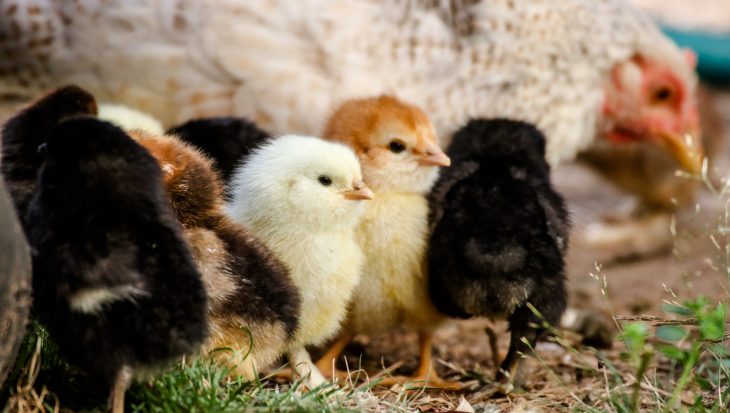Animal Aid’s Director, Andrew Tyler, and Horse Racing Consultant, Dene Stansall, will be in Oxford today to fight a proposal to introduce horse-drawn carriages to the centre centre. They will be addressing the full council, setting out our opposition to the scheme on animal welfare and public safety grounds.
Oxford City councillors will today vote on whether to approve a scheme for a horse-drawn carriage service through the city centre. Animal Aid, which led a campaign that stopped a similar proposal in the city ten years ago, will address the full council before the vote, setting out its opposition on animal welfare and public safety grounds.
The campaign group has also invited all councillors and local media to attend its drop-in information session in a room at the town hall ahead of the evening meeting. There, councillors will be shown film of the proposed route, illustrating its hazards, as well as examples of how such carriage schemes in other cities have led to horses collapsing, dying, or ‘spooking’ and running amok.
Carriage Horses in Oxford:
The case against
Horse welfare:
The question of horse welfare – as well as the proposed new Byelaws – does not appear to have been considered in an adequate or independent manner. The General Licensing Purposes Committee accepted that the welfare conditions were satisfactory based on the recommendations of the Public Health Team Leader in Environmental Development. But it is unclear how the Team Leader came to his or her decision and whether an independent expert was consulted. Below we set out a number of concerns relating to horse welfare:
- The cobbled streets and tarmac roads will have a negative impact on the legs, feet and backs of the horses.
- The high action (gait) of Friesian horses means more steps must be taken to cover the ground, which can result in a greater physical impact on the feet and legs.
- The stop-go pattern raises the risk of equine myoglobinuria – a potentially fatal condition.
- The horses will be shod. This will negatively affect grip on a wet, cobbled surface.
- The weight of the carriages the horses are required to pull is considerable. They will have to do so over prolonged periods of time, in challenging conditions and in different temperatures and weathers.
- If the horses are made to trot the route at 7 mph (rather than walk at a slower pace) the duration of the route will not be 30 minutes but 36 minutes. When multiplied by four runs, each work session will be closer to two-and-a-half hours than two hours. The consequences will be less rest between working sessions or an increase overall in the working day.
- The horses are black in colour, and so their coats absorb heat. This leads to heat stress. They will also take longer to cool down. They need to do this not by standing still but by being walked round without harnesses – impossible in the city centre. The lack of shelter in hot weather or rain is also of serious concern.
- An annual veterinary certificate is an insufficient way to monitor the ongoing health of an animal. There is no structure in place for independent monitoring. Neither is there an emergency plan should a horse fall or take ill suddenly in the city centre.
- In the last two months, in New York, one carriage horse has died, two have collapsed and another bolted.
Pollution:
- Horses may well be standing amongst cars with engines running, in heavy traffic, which will have a damaging effect on their respiratory systems.
- Pollution is a very real concern in the city centre. Oxford’s pollution levels have recently exceeded the EU limit during hot weather.
Congestion:
The Route:
- Large sections of the route (about two-thirds) are cobbled. This will affect the feet, legs and backs of the horses, and also cause painful, bruised soles. (Please visit the following YouTube link which shows the 0.28 km cobbled section of Merton Street: http://youtu.be/91NgS2eEo_c )
- Many road surfaces are in poor repair. (View the video of Merton Street – http://youtu.be/91NgS2eEo_c )
- Inclines add extra stress to the horses.
- Narrow roads/passages are potentially dangerous to horses.
- The proposed route involves the carriage going the entire way around the Plain roundabout at the end of Magdalen Bridge and back over Magdalen Bridge. The Plain has five roads coming off it, and is very busy throughout the day. This poses a danger to the horses. At peak times it is frequently blocked with polluting traffic. (Please see the YouTube video of the roundabout and traffic at: http://youtu.be/FmHOZdHKTzo )
Public safety:
- We are not aware of any risk assessment having been carried out for the narrower parts of the route, in relation to public safety for passengers and pedestrians, should a carriage collide with a bollard, shop front or pedestrian.
- The proposer of the scheme has asserted that the horses will not bolt. But this is not an adequate health and safety assessment. The council needs to be sure that, should a horse bolt, fall or become uncontrollable, public safety will not be compromised.
Other issues:
- There does not appear to have been a proper consultation with the owners of the shops and businesses around the route, regarding the proximity or frequency of carriages driving past, and the knock-on effects of crowding, potential accidents and mess.
- We do not consider the online public consultation by Oxford Council to be adequate for a proposal that will affect the businesses and people who live and work in Oxford. The consultation did not ask whether respondents agreed or disagreed with the plans – merely if they had a comment about the proposal and introduction of new Byelaws.
- The results of the consultation – including a very strong objection from the Taxi Drivers Association – appear to have been disregarded, without explanation.

